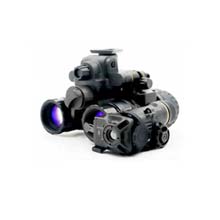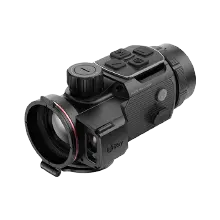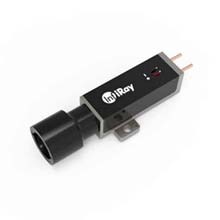Wildlife Mysteries Revealed: Can Thermal Cameras Detect Animals?

In the vast world of wildlife, mysteries abound, hidden in the depths of forests, the expanses of deserts, and the darkness of night. However, thanks to advancements in technology, we are unraveling these mysteries one by one. One such groundbreaking tool in the arsenal of wildlife researchers and conservationists is the thermal camera.

How Thermal Cameras Work
To understand the magic behind thermal cameras, let's take a closer look at their inner workings. Unlike traditional cameras that rely on visible light, thermal imaging cameras operate based on infrared radiation. Every object emits infrared radiation, and this includes animals. These cameras detect these heat signatures, translating them into visible images. This technology allows us to see in complete darkness and through obstacles like dense vegetation.
The advantages of thermal cameras in wildlife detection are remarkable. Imagine tracking elusive nocturnal creatures or identifying well-camouflaged animals in their natural habitat. Thermal imaging opens up new possibilities for researchers and conservationists, offering a non-intrusive and effective method for observing wildlife.

Challenges in Wildlife Detection
While thermal cameras have revolutionized wildlife monitoring, they are not without challenges. Natural camouflage and the adaptive nature of animals pose difficulties in detection. Some animals have evolved to blend seamlessly with their surroundings, making them nearly invisible even to thermal cameras.
Environmental factors also play a role. Weather conditions, such as heavy rain or fog, can affect the performance of thermal imaging cameras. Understanding these challenges is crucial for developing effective strategies for wildlife surveillance. However, some advanced infrared thermal imagers have been able to break through these climatic factors and present us with high-definition infrared images of the wonderful world of animals.

Applications of Thermal Cameras in Wildlife Monitoring
The applications of thermal cameras in wildlife monitoring are diverse and impactful. Tracking nocturnal animals, which are often overlooked in daylight studies, becomes achievable with thermal imaging. Identifying endangered species becomes more accurate, contributing crucial data for conservation initiatives.
Moreover, they are instrumental in monitoring migration patterns and behavioral studies. From the skies to the depths of the oceans, thermal imaging provides a comprehensive view of wildlife activities, enabling researchers to make informed decisions for the protection of biodiversity.

Future Prospects and Technological Advancements
As technology continues to evolve, so does the potential of thermal imaging in wildlife research. Ongoing studies explore the integration of artificial intelligence to enhance the precision of animal detection. Drones equipped with thermal cameras extend the reach of researchers, providing a bird's-eye view of remote and inaccessible areas.
These technological advancements promise an exciting future for wildlife detection. The ability to gather data more efficiently and accurately opens new avenues for understanding and conserving our planet's diverse ecosystems.

Tips for Optimal Wildlife Detection Using Thermal Cameras
For researchers and enthusiasts eager to embark on wildlife detection using thermal cameras, adopting best practices is essential. Proper calibration and regular maintenance ensure optimal performance. Understanding the behavior of target species aids in positioning cameras strategically for maximum impact.

The use of thermal cameras in wildlife detection has lifted the veil on many mysteries that once shrouded the animal kingdom. From the depths of the Amazon rainforest to the frozen landscapes of the Arctic, thermal imaging has become an indispensable tool for researchers and conservationists alike. As we continue to unveil the secrets of the wild, let us embrace the potential of thermal cameras to contribute to a more comprehensive understanding of the intricate web of life on Earth. By combining technology, dedication, and a passion for conservation, we can ensure a brighter future for the countless species that share our planet.

















